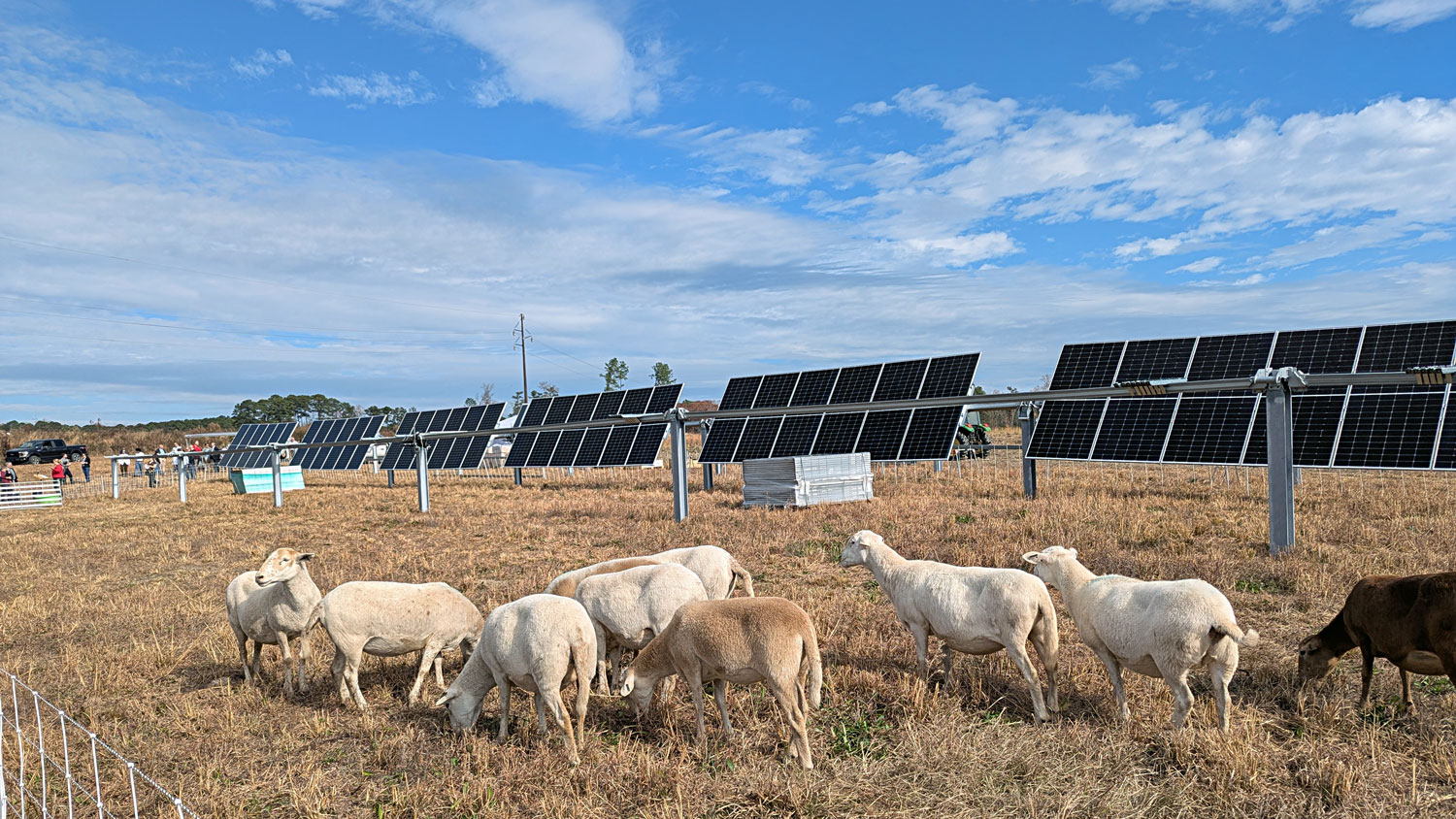Postdoctoral program aims for greater faculty diversity
Dr. Terrence Gardner became the first Dean’s Postdoctoral Fellow in the College of Agriculture and Life Sciences when he was hired in the fall of 2012 to work with Dr. Owen Duckworth, assistant professor of soil science.
And when Gardner was hired, he became the first African-American postdoctoral researcher in the College in nearly a decade, which is why the Dean’s Postdoctoral Fellowship was created. The fellowship provides outstanding scholars from underrepresented groups with an opportunity that might not otherwise be available.
The fellowship is a novel creation of Dr. Lisa Guion Jones, assistant dean for diversity, outreach and extension, and the CALS Diversity Council. Funding for the position is shared equally by the North Carolina Agricultural Research Service and CALS Academic Programs office, while the department in which the postdoc is located must agree to provide funding for activities such as attending conferences and other professional development. Appointments are for two years.
The idea behind the program, Jones explains, is to provide the postdoc with enhanced research skills training and mentoring. The program also provides opportunities to co-teach a core course, co-author grants and manuscripts and engage in other experiences at one of the top colleges of agriculture and life sciences in the nation.
The experience is designed make the postdoc competitive for future faculty positions. Jones points out that a lack of faculty diversity is a nationally recognized issue in higher education.
“We want to increase diversity in the academy,” Jones says. “In most science disciplines, you need a strong postdoc. That is the heart of the program, preparing more women and minorities for research and teaching positions in the academy.”
While New Jersey native Gardner came to CALS from the campus of Texas Tech University, where he served for two years as a visiting scientist with the USDA Agricultural Research Service after earning his doctorate at Alabama A&M University, he is no stranger to North Carolina.
Gardner holds a master’s degree from North Carolina Central University, where he decided to enroll “to keep my mind fresh” while waiting to attend medical school. While attending N.C. Central, he participated in a summer internship with USDA-ARS on the campus of Oregon State University, where he fell in love with soil and environmental sciences.
Deciding not to attend medical school, even though he’d been accepted, Gardner instead earned a doctorate in plant and soil science at Alabama A&M. That’s where he might be today, he says, were it not for the Dean’s Postdoctoral Fellowship.
In the relatively short time Gardner has been at N.C. State, he has worked primarily on trying to understand what’s going on at a hazardous materials storage site near Carter-Finley Stadium. The university stored chemical and biological waste at the site until 1980. The site has a soil and water bioremediation system, but the system is producing unwanted manganese oxide sludge, which hinders the bioremediation process.
Gardner’s research focuses on developing methods for evaluating, predicting and managing the groundwater and soil remediation process and developing new soil and water remediation strategies to make effective use of microbial activity in the sludge.
Gardner recently spent time at both the Smithsonian Institute in Washington, D.C. and the Stanford Synchrotron Radiation Lightsource in California using cutting-edge equipment and innovative technologies at the two locations to study the sludge. The Stanford Synchrotron Radiation Lightsource is an SLAC National Accelerator Laboratory operated by Stanford University on behalf of the Department of Energy.
Gardner also participated in December in a two-day workshop during which he aided high school teachers in developing lesson plans related to trace metal cycling and metal toxicity. And he and Duckworth co-taught SSC 442, Soil and Environmental Biogeochemistry. Duckworth and Gardner have also co-authored a manuscript that has been accepted for publication.
“I thoroughly enjoy teaching” says Gardner. “It’s rewarding when I identify students who attain a grasp of the topic; for lack of a better term, the light bulb over their head shines bright.”
Both Duckworth and Jones see the postdoctoral program as a win-win for the college and the postdoc.
Duckworth describes the program as “a good two-way street.” He says Gardner provides expertise not previously available to his lab, while, “We’re helping him learn some things, too.”
“Of course, it benefits the postdoc, who will be highly marketable as a result of how this program is designed,” Jones says. “But it also greatly benefits the junior faculty member by providing research and teaching assistance.”
Gardner points out that he probably would not be at N.C. State were it not for the postdoctoral program.
“I like it here,” he adds. “This is a great environment. All my colleagues have been very helpful and welcoming from the first day I set foot on the campus.”
As for the possibility he might someday be a tenure-track faculty member at N.C. State or a comparable university, he says, “Yes, I would love that. I enjoy teaching, I enjoy research. So I would have the best of both worlds in that sense.”
— Dave Caldwell
- Categories:


